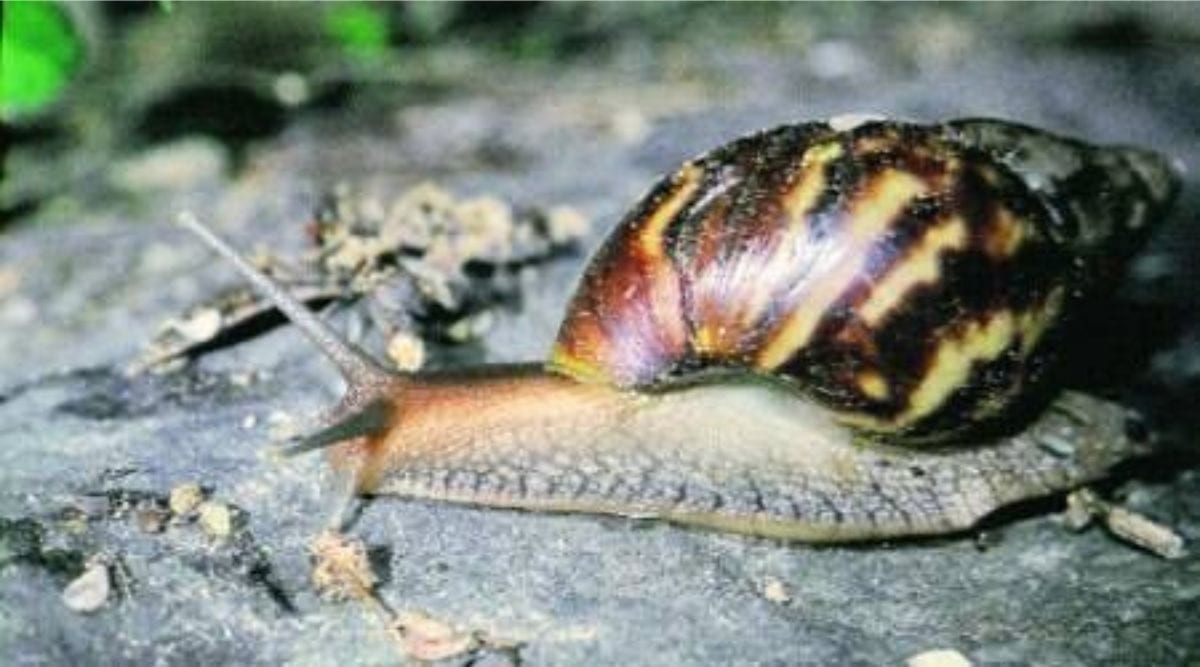 The researchers argued that detailed flora and fauna identification and their species assessment was imminent in order to avoid species loss. (Representational)
The researchers argued that detailed flora and fauna identification and their species assessment was imminent in order to avoid species loss. (Representational) Rapid urbanisation and poor land-use, especially near major rivers in Pune city during the recent decades, have directly contributed to the decline of the gastropods (shelled organisms), a new study has found.
Many native snails, which were once commonly spotted in rivers of Pune, have been replaced by invasive species as recorded from the samples collected from river banks of tributaries of Mula, Mutha, Indrayani and Pavana by Pune-based researchers.
The findings are more pertinent and comes at a time when the Pune Municipal Corporation (PMC) is soon launching the Mula-Mutha River Front Development project, which researchers and environmentalists univocally call a disaster waiting to happen with respect to biodiversity and river ecosystems in the city.
“Habitat modification undertaken in the name of (river) beautification and restoration without the consultation of scientific experts in restoring ecology can severely impact the native ecology of any aquatic ecosystem,” said Sameer Padhye, co-author of the study and researcher with Biologia Life Science LLP, Ahmednagar.
The new study, published in Journal of Urban Ecology, concluded that the sites with increased urbanisation reported a decrease in the gastropod species richness — a key indicator of a healthy environment for the snail population. Not more than two or three species were recorded in areas with high built-ups, the researchers found. Mula and Mutha rivers — that flow through the most developed areas of the cities — offered a not-so-healthy marine ecosystem for these shelled organisms, said Mihir Kulkarni, lead author and a Pune-based biologist. Whereas, better species richness was noted at Pavana and Indrayani river tributaries, he added.
In all, 13 gastropod species were recorded from seven sites of these four river tributaries. Notably, a non-invasive snail species named Physella acuta — whose presence was limited to Mula river some 25 years ago — has now spread and was found growing in the other three rivers too, highlighting the thriving non-native species and their dominance all linked to urbanisation. While numerous studies are done usually focusing on the biodiversity and species richness of larger animals and fishes, very little is known about the smaller and micro-sized organisms. The researchers argued that detailed flora and fauna identification and their species assessment was imminent in order to avoid species loss.
“If the riverbanks are modified without conducting a detailed biodiversity or ecological study of the natural inhabiting flora and fauna, such organisms will perish after the modification due to habitat destruction. Very little or no attention is given to the smaller organisms which are more diverse in proportion and abundant than larger animals,” Padhye said.
- The Indian Express website has been rated GREEN for its credibility and trustworthiness by Newsguard, a global service that rates news sources for their journalistic standards.

